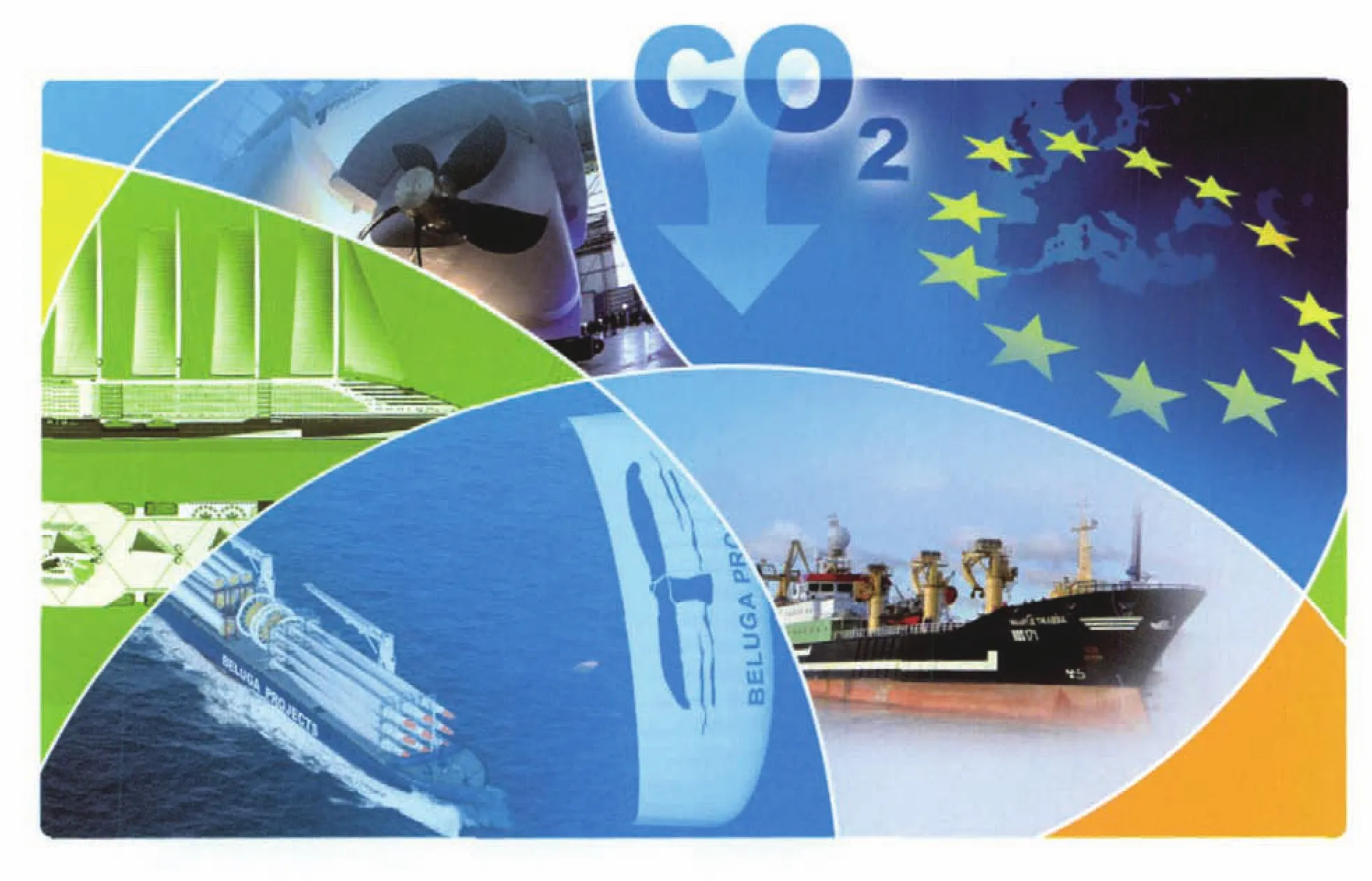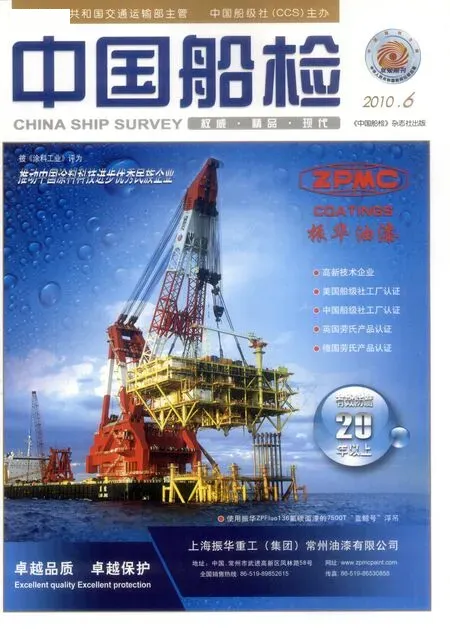欧洲船舶工业的低碳行动
韩光 刘啸波
欧洲船舶工业的低碳行动
韩光 刘啸波

近年来,尽管欧洲三大造船指标全面下滑,世界造船重心转向韩国、中国、日本,但凭借其强大的技术优势,欧洲仍处在世界船舶工业的领先地位。究其原因,是欧洲造船业始终坚持技术引领的发展战略,始终将关注重点放在科技开发上。在欧盟委员会的推动下,欧洲先后出台了一系列船舶技术研发政策,并开展了大量研发项目,如《船舶领袖2015计划》(《Leadership 2015》)、《欧盟第六研发框架计划》(FP6)、《欧盟第七研发框架计划》(FP7)、船用超低排放燃烧高效率柴油机研发项目(Hercules),欧洲突破船舶和造船技术研究项目(BESST)等。受益于这些政策和项目,欧洲船舶工业在船舶设计建造技术,船舶配套设备如船舶动力设备、船舶控制设备等关键设备技术领域始终保持着世界先进水平和主导地位。在全球倡导低碳经济的大背景下,欧洲各国大力开展船舶绿色、环保技术研发,以期进一步巩固其优势地位。
船舶动力技术
2004年,在欧盟推动下,船用超低排放燃烧高效率柴油机研发项目(Hercules)正式启动。截止2007年,第一阶段Hercules-α项目的研发工作已成功结束,研究经费总计3300万欧元(其中1500万欧元由欧盟提供资助)。与2003年船用柴油机最先进的技术相比, Hercules-α项目实现燃料消耗降低1.4%,NOx减排50%(与IMO2000年制定的排放标准相比),SOx减排90%,颗粒物质(PM)减排40%,碳氢化合物(HC)减排20%,可靠性达到8000小时以上。在Hercules-α项目基础上,世界两大船用柴油机巨头MAN柴油机公司和瓦锡兰公司共同牵头开展Hercules-β项目,其研究方向也代表着环保型船用柴油机的研发趋势。该项目目标主要有提高船用柴油推进效率60%以上,降低船用柴油消耗(SFC)10%,烟尘减排50%,NOx减排70%,达到IMO规定最高排放限值。该项目自2008年起实施,计划研究周期36个月。
自2003年挪威船级社启动FellowSHIP项目——全面试验船上燃料电池以来,挪威船级社一直致力于船舶和海洋平台用燃料电池的研究及商业化推广。如果项目取得成功,将极大地降低二氧化碳排放量,提高能效,实现危险物质的零排放。该项目在2009年9月取得阶段性进展,在一艘海洋工程供应船“海盗夫人”号上成功安装320KW功率的燃料电池,作出了一次世界级创新。德国、冰岛等欧盟国家也对第二代动力之一的燃料电池十分积极。德国通过“ZEM项目”开发了可以乘坐100人的内河专用燃料电池船舶,冰岛也成功设计出全球首款氢能商用船。
此外,欧洲各国还致力于研究利用风能、太阳能、液化天然气等清洁能源为船舶提供动力的技术。德国开发出世界第一艘风动力货船“白鲸天帆(Beluga SkySails)”号和第一艘风动力渔船“玛特杰迪多拉(Maartje·Theadora)”号。德国还研制出以太阳能为动力的“星球阳光”号双体船(如图1所示)。挪威船级社设计一艘能利用液化天然(LNG)作为船舶燃料的新概念集装箱(如图2所示)。

船舶减阻技术
荷兰船舶气腔系统(ACS)技术开发商DK集团开发出气腔系统技术,并成功在一艘超大型油轮(VLCC)上进行了相关测试。气腔系统技术利用气腔替代船底表面,能减少船底摩擦阻力,从而提高船舶的燃油效率。气腔系统包括气腔、喷气系统和控制系统。如图3所示,安装在船底的气腔,能减少船体与水接触面积,从而减少船体阻力;自动压缩机和阀门组成的喷气系统能向气腔内注入空气,而控制系统则用于监控空气数量和气压,并维持气腔内的空气处于最佳水平。船舶安装气腔系统后,最多能降低15%燃油消耗量,相应也就减少了二氧化碳排放量。
英国科学家研制出可有效清除藤壶而不对海洋环境造成污染的船舶涂料。他们将一种比人类头发细一千倍的碳纳米管融进油漆中,该碳纳米管可在分子层面改变油漆表面。当船舶移动时,附着生物可轻易被冲走。该船舶涂料的研究成功,不仅带来了巨大经济效益,也具有重要的环保意义。因为,多年来船舶上附着生物的问题一直困扰着全球船东,每年为清除此类生物大约要花费数十亿英镑。不仅是航运业,就连私人游艇、海水淡化厂也深受其害。由于船舶附着藻类会增加船体阻力,从而增加船舶油耗,进而导致碳排放增加。研究表明,一艘船舶粘附上藻类或藤壶,其速度会减少10%,而耗油量会上升40%,全球船舶业每年为此需耗资近一百亿美元。

复合环保技术
法国造船集团——欧洲世腾造船集团设计出环保概念邮轮“Eoseas”号。该邮轮主要使用可再生能源,限制温室气体排放量,其设计充分体现了节能环保的理念。桅杆上的风帆在为船舶提供风能动力的同时,能将收集的空气导入船底产生气泡形成气垫,从而减少船底阻力,提高船舶水动效力;该邮轮使用液化天然气(LNG)作为燃料,同时,邮轮上还安装了太阳能储电板,能利用太阳能供电;其双重外壳板设计更有作为天然空调系统之效;此外该邮轮会循环使用水、回收上层甲板的雨水、以及使用从处理废物时回收的能源。

In 2004, driven by the European Union, the research and development project (Hercules) for marine diesel engine with ultra-low emission and high efficiency was launched formally. By 2007, the first stage work of Hercules-α project has successfully concluded,which costs a total of 33 million Euros including 15 million Euros provided by EU. Compared with the most advanced technology of marine diesel engine in 2003,the Hercules-α project realized a 1.4% reduction of fuel consumption, a 50% reduction in NOxemissions compared with the emission standard enacted by IMO in 2000,a 90% reduction in SOxemission, a 40% reduction in particle material (PM) emissions and a 20% reduction in hydrocarbon (HC) emissions, the reliability could last more than 8000 hours. On the basis of Hercules-α project, two marine diesel engine giants, MAN diesel engine company and Wartsila company jointly lead the development of Hercules-β project, whose research direction also represents the development trend of environmental marine diesel engine. The main targets of this project are to improve the propulsive eff i ciency of marine diesel engine by more than 60%, to reduce ship fuel consumption (SFC)by 10%, to reduce smoke dust emission by 50%, and to reduce NOxemission by 70% to achieve the highest emission limit set by IMO. This project was started in 2008,and is planned to last 36 months.
Since 2003 when DNV started the Fellow SHIP project which focused on comprehensive testing on marine fuel cell, DNV has been committed to the research and commercial promotion of fuel cell used on ships and marine platforms. If the project succeeds, the carbon dioxide emission will be dramatically reduced, the eff i ciency will be improved, and the zero discharge of hazardous substances will be realized. This project made a periodical progress in September 2009, the fuel cell of 320KW power was successfully installed onboard an oceaneering supply ship “Madam Pirate”, which made an innovation of a world-class. Germany, Iceland and other EU countries are also positive for the fuel cell which is considered to be one type of the second generation of power. Through the“ZEM project”, Germany has developed the fuel cell ship specialized in navigating in incoming rivers, which can accommodate 100 people. Iceland has also successfully designed the world's first hydrogen-powered commercial ship.
In addition, the European countries are also committed to the study and the use of the clean energy, like wind energy,solar energy and liquefied natural gas to provide power for ships. Germany developed the world’s fi rst cargo ship powered by wind, “Beluga SkySails” and the first fishing vessel powered by wind, “Maartje Theadora”. Germany also developed the catamaran powered by solar energy,“planet sunshine”. DNV designed a new concept container,which can be fuelled by liquef i ed natural gas (LNG).
The Dutch developer of ship air cavity system (ACS)technology, DK group developed the air cavity system technology, and carried out related testing on a VLCC successfully. The air cavity system technology replaces the surface of ship bottom with gas cavity to reduce the friction resistance of ship bottom, so as to improve the fuel efficiency. With the installation of air cavity system,fuel consumption can be reduced by 15%, and the carbon dioxide emission will also be correspondingly reduced.
Low Carbon Action of European Shipbuilding Industry
By Han Guang & Liu Xiaobo

